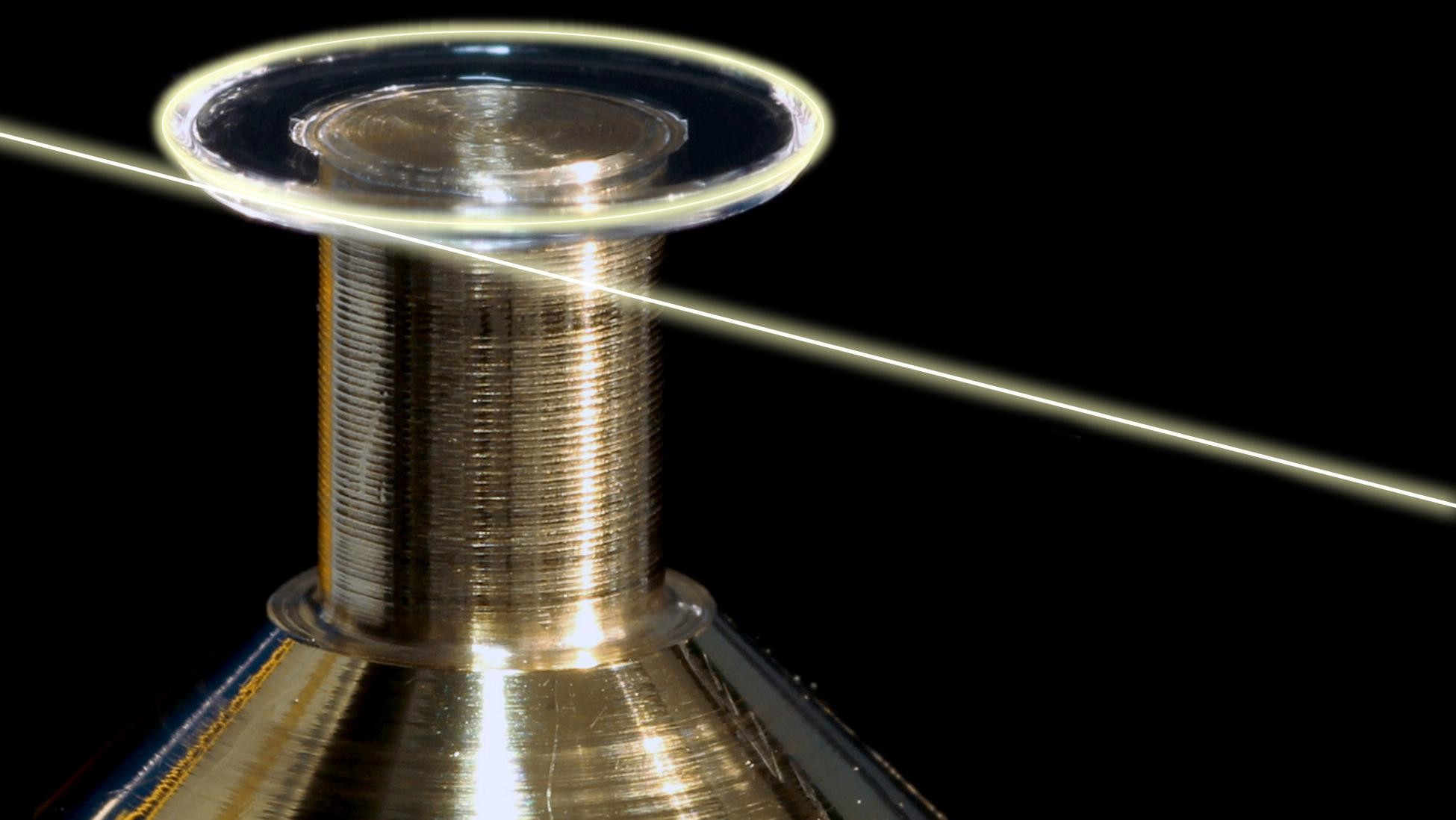23.11.16 - Researchers led by EPFL have built ultra-high quality optical cavities for the elusive mid-infrared spectral region, paving the way for new chemical and biological sensors, as well as promising technologies.
The mid-infrared spectral window, referred to as “molecular fingerprint region,” includes light wavelengths from 2.5 to 20 μm. It is a virtual goldmine for spectroscopy, chemical and biological sensing, materials science, and industry, as it is the range where many organic molecules can be detected. It also contains two ranges that allow transmission of signals through the atmosphere without distortion or loss. A way to harness the potential of the mid-infrared spectral window is to use optical cavities, which are micro-devices that confine light for extended amounts of time. However, such devices are currently unexplored due to technological challenges at this wavelength. Researchers led by EPFL have taken on this challenge and successfully shown that crystalline materials can be used to build ultra-high quality optical cavities for the mid-infrared spectral region, representing the highest value achieved for any type of mid-infrared resonator to date and setting a new record in the field. This unprecedented work is published in Nature Communications.
Caroline Lecaplain and Clément Javerzac-Galy from Tobias J. Kippenberg’s lab at EPFL led the research effort, together with colleagues from the Russian Quantum Center. To make these ultra-high quality microcavities, the scientists used alkaline earth metal fluoride crystals that they polished manually. They developed uncoated chalcogenide tapered fibers to efficiently couple mid-infrared light from a continuous wave Quantum Cascade Laser (QCL) into their crystalline microcavities. Finally, cavity ring-down spectroscopy techniques enabled the team to unambiguously demonstrate ultra-high quality resonators deep in the mid-infrared spectral range.
Equally important, the scientists also show that the quality factor of the microcavity is limited by multi-phonon absorption. This is a phenomenon in which phonons – quasiparticles made of energy and vibrations in the cavity’s crystal – simultaneously interact and disrupt light confinement.
This work marks a milestone in the field of mid-infrared materials as it opens for the first time access to ultra-high resonators. It is a significant step toward a compact frequency-stabilized laser in the mid-infrared, which could have a major impact on applications such as molecular spectroscopy, chemical sensing and bio-detection.
The work included contributions from the Lomonosov Moscow State University. The project was funded by the European Commission, the Swiss National Science Foundation and DARPA.
Reference
Lecaplain C, Javerzac-Galy C, Gorodetsky ML, Kippenberg TJ. Mid-infrared ultra-high-Q resonators based on fluoride crystalline materials. Nature Communications 21 November 2016. DOI: 10.1038/NCOMMS13383















